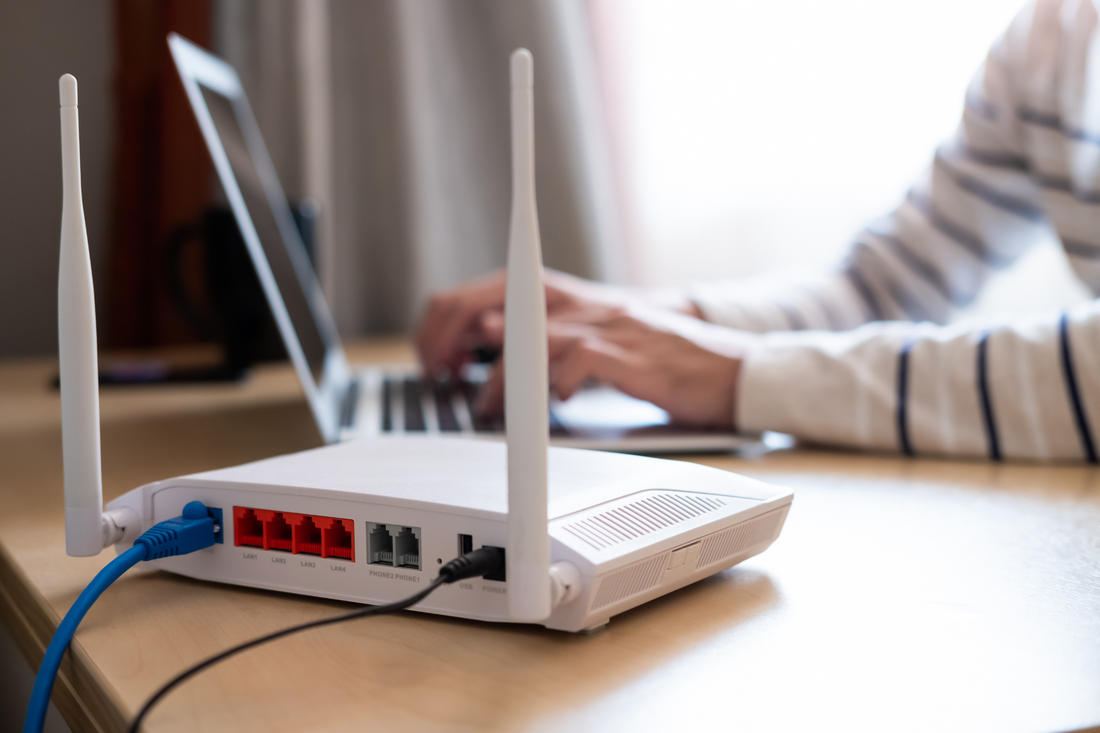
WI-FI 6 AND WI-FI 6E: THE NEW WLAN STANDARDS COMPARED – FASTER, MORE STABLE, BETTER?
Share
 The world of wireless networks is constantly evolving. With the new Wi-Fi standards Wi-Fi 6 (802.11ax) and Wi-Fi 6E, the speed, efficiency, and stability of Wi-Fi connections are taken to a new level. But what exactly differentiates these standards from their predecessors? How do users benefit from them? And is it worth upgrading to Wi-Fi 6 or Wi-Fi 6E? This article provides a comprehensive and understandable overview.
The world of wireless networks is constantly evolving. With the new Wi-Fi standards Wi-Fi 6 (802.11ax) and Wi-Fi 6E, the speed, efficiency, and stability of Wi-Fi connections are taken to a new level. But what exactly differentiates these standards from their predecessors? How do users benefit from them? And is it worth upgrading to Wi-Fi 6 or Wi-Fi 6E? This article provides a comprehensive and understandable overview.
What is Wi-Fi 6?
Wi-Fi 6, also known as IEEE 802.11ax, is the direct successor to Wi-Fi 5 (802.11ac). The standard brings numerous improvements that are particularly relevant in modern households and businesses with many connected devices.
Advantages of Wi-Fi 6:
- Higher speed: Wi-Fi 6 offers up to 40% higher speed compared to Wi-Fi 5 thanks to 1024-QAM (Quadrature Amplitude Modulation).
- Better efficiency: With OFDMA (Orthogonal Frequency Division Multiple Access), multiple devices can be supplied with data more efficiently at the same time.
- Lower latency: Optimized data packet management reduces latency, which is particularly noticeable in online gaming or video calls.
- More devices simultaneously: Wi-Fi 6 improves capacity and is better suited for households or offices with many connected devices.
- Improved battery life: Target Wake Time (TWT) ensures that devices do not have to constantly send and receive data but are only active when needed.
- Higher security: With WPA3, Wi-Fi encryption is more secure and better protects against brute-force attacks.
What is Wi-Fi 6E?
Wi-Fi 6E is an extension of Wi-Fi 6 and additionally utilizes the 6 GHz frequency band. This results in further advantages:
Additional advantages of Wi-Fi 6E:
- More frequency spectrum: The new 6 GHz band offers up to 1,200 MHz of additional spectrum.
- Fewer interferences: Since this band is exclusively reserved for modern Wi-Fi devices, there are fewer disruptions from older networks or other wireless technologies.
- Higher speeds: With more and wider 160 MHz channels, even higher data rates can be achieved.
- Better performance in densely populated areas: Especially in urban areas where many Wi-Fi networks coexist, users benefit from Wi-Fi 6E.
Questions and Answers about Wi-Fi 6 and Wi-Fi 6E
Who should consider Wi-Fi 6?
Wi-Fi 6 is particularly worthwhile for households and offices with many connected devices. Those who use smart home technology or have high network utilization will benefit from improved efficiency and speed.
Can every device receive Wi-Fi 6?
No. Older devices that only support Wi-Fi 5 or earlier standards cannot take advantage of the new features. However, Wi-Fi 6 routers are backward compatible, so they also work with older Wi-Fi devices.
What is the difference between Wi-Fi 6 and Wi-Fi 6E?
Wi-Fi 6E extends Wi-Fi 6 with the 6 GHz frequency band. This results in fewer interferences and higher speeds. However, compatible end devices are required to use Wi-Fi 6E.
How can I use Wi-Fi 6 or Wi-Fi 6E?
A corresponding router and compatible devices are required. Wi-Fi 6 devices are now widely available, while Wi-Fi 6E is still more common in high-end devices. For stationary devices such as PCs or gaming consoles, a high-quality network cable can further stabilize the connection and guarantee higher speeds.
Conclusion: Is upgrading to Wi-Fi 6 or Wi-Fi 6E worth it?
Wi-Fi 6 brings significant advantages in terms of speed, stability, and efficiency. Those who use many smart devices or frequently engage in video conferencing or online gaming will benefit from the upgrade. Wi-Fi 6E is even more powerful but requires devices that support the new 6 GHz band.
For households and businesses looking to invest in future-proof network technologies, Wi-Fi 6 is definitely a worthwhile purchase. Those who are already reaching the limits of Wi-Fi 6 or live in particularly crowded wireless environments should consider Wi-Fi 6E. For absolute stability and minimal latency, it is still advisable in some scenarios to rely on a LAN connection with a good network cable.
